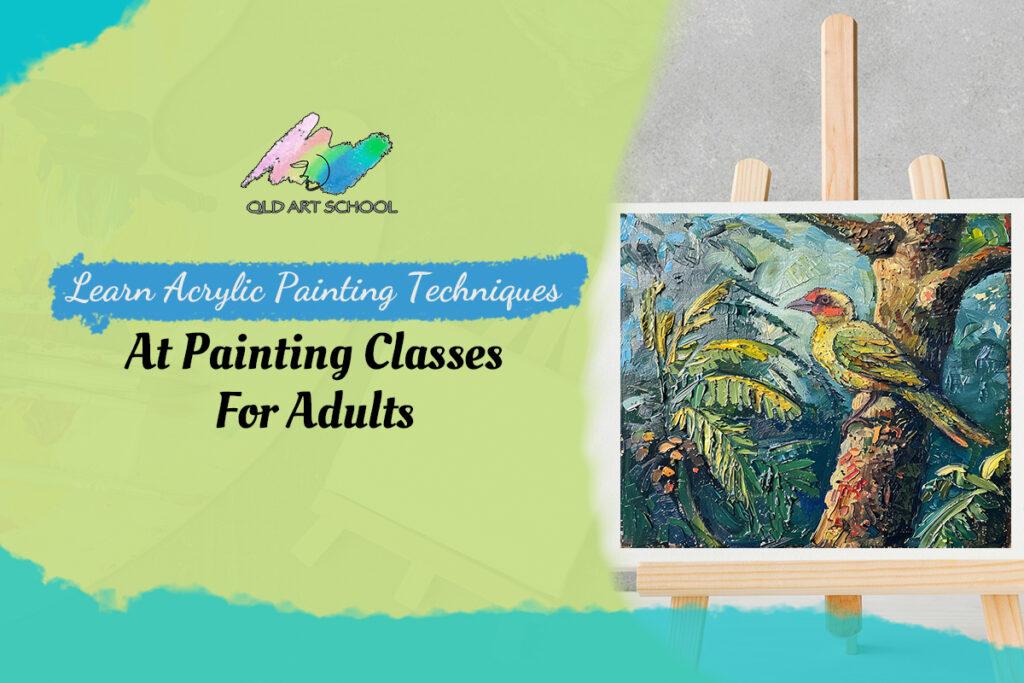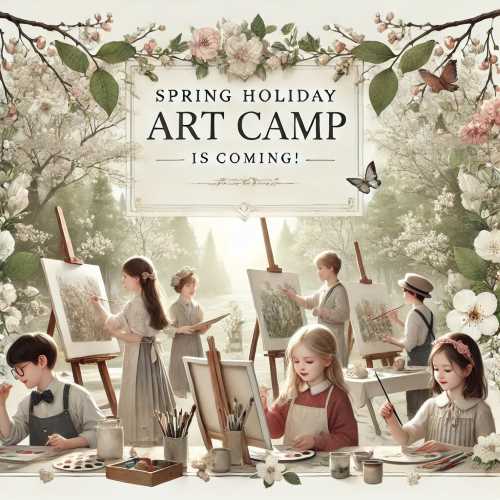
If you’re ready to steep yourself into the world of acrylic painting, enrolling in painting classes for adults could prove to be very helpful. Learning from an expert guide who can correct the techniques you have picked up along the process and help you discover new ways of painting acrylics, or critique your work, could prove to be an eye-opening experience for you as you navigate through the exciting world of acrylic art.
At Queensland Art School, we offer some of the best art lessons in Brisbane for adults and children in acrylic art. We love to work with acrylics and would love to explore the medium with you, offering you our expertise and experience over years of teaching acrylic art.
Acrylic is a very simple and fuss-free medium. The paints can be used directly from the tube and can be applied easily onto several surfaces like canvas, wood, ceramics, fabrics, and even glass. It’s versatile and easy to clean up, making your foray into this medium the perfect decision as a beginner.
In this blog, we explore some of the common techniques that are popular in acrylic art and you could pick up easily at an art class with us. Learn more right here!
In what order to paint with acrylics?
Before you start painting with acrylics, apply gesso, which is a liquid primer made from chalk, pigment, and a binder. This is white or off-white in colour and adds the perfect base on which to start. Applying gesso can create enough grip for further application of acrylic paint. You could also mix in some of the base colour of your choice so that you don’t have to begin with a plain white background.
How to paint layers with acrylics?
Acrylics dry fast. It’s important that you work quickly to incorporate texture and colour mixing as once the paint dries you will have to sand it off and start your efforts again. Thin layers of paint dry faster than thicker layers of paint so working quickly is the only solution if you want to mix colours or add texture to your acrylic painting. Painting classes for adults usually explore this technique very early on in the teaching process.
How does colour opacity affect the acrylic painting?
Acrylic paints can be opaque or translucent, which affects how you apply them and in which order. Paints will be labelled either way. Typically there should be some translucency in the colours to allow layers below to show through. Sometimes you may need to paint over something, like a feature you don’t want, then it’s important to make use of opaque colours and rectify the painting. Art lessons in Brisbane from Queensland Art School can help you get started on this.
What is dry brushing?
Applying paint with a dry brush can create a unique textured or scratchy surface which gives the appearance of an old wood grain, fur, grass, or hair. Because the brush strokes actually show through, this technique gives a very realistic view of wood grain, fur, grass, or hair.
What is the wet brush on dry canvas technique?
This is one of the most common techniques taught in art lessons. Simply wet your brush and load on the paint. Then apply this to the canvas where you want to paint. A wet brush offers a more smoother application.
What is the stippling technique?
Stippling, also known as pointillism, is a technique where you use the tip of a brush, usually a pointed or round one, to dab paint onto the canvas in small dots or circles. The spacing and frequency of these dots determine the intensity of the colour, creating a unique, impressionistic look.
What is the impasto technique?
This painting method uses a palette knife to spread thick paint, adding texture and depth. With the impasto technique, you apply thick paint in dabs and blobs instead of smooth strokes like a brush. Usually, you’d use a thick paint or mix in a heavy gel to keep the texture from the palette knife until it dries. Though it’s not very precise, this technique adds unique textures, movement, and depth to your artwork.
Acrylic pour and abstract art
The acrylic pour is a painting technique where you mix acrylic paints with a pouring medium, then pour and drip the mixture onto a canvas. This allows the paint to flow and create unique, marbled patterns. To do it, you simply mix the paint and medium in containers (disposable cups work well), then pour it on the canvas. By tilting the canvas, the paint spreads and creates swirls. You can also use tools like a toothpick or blow dryer to add movement to the paint.
Wrapping up
Painting classes for adults can be directed towards individuals with a lot of experience and those without. You need to pick out a class that suits your level of skill and expertise. Queensland Art School offers art lessons in Brisbane for a variety of learning stages so you can either start off with acrylic painting or go deeper into the subject.



